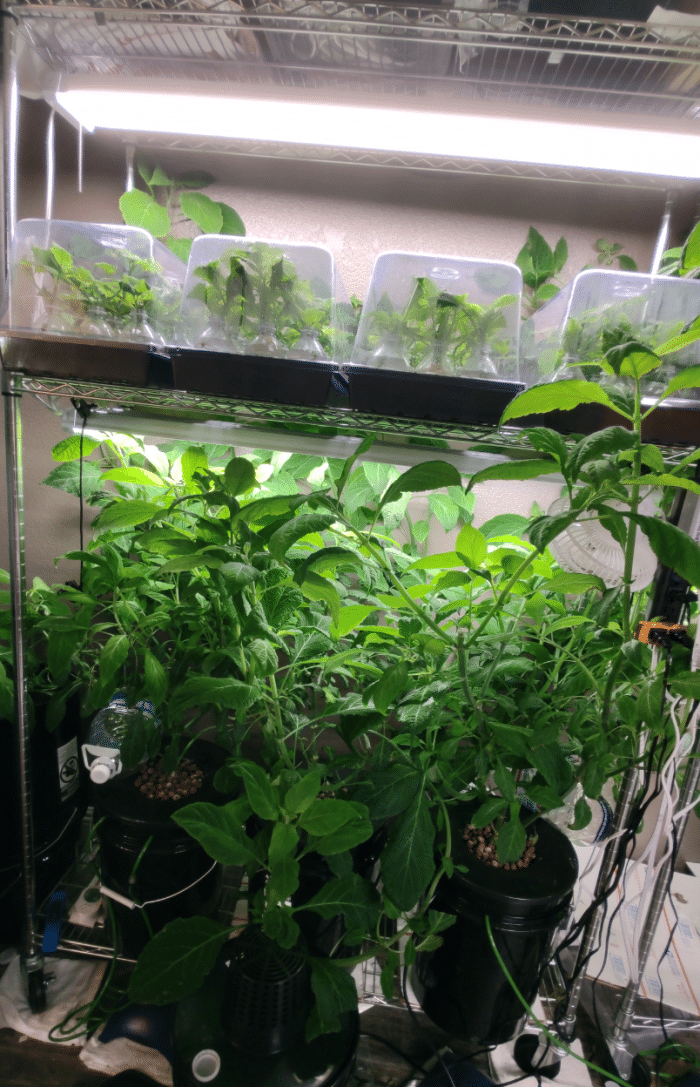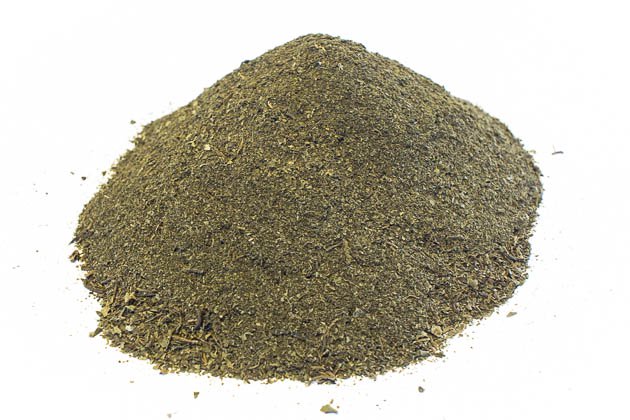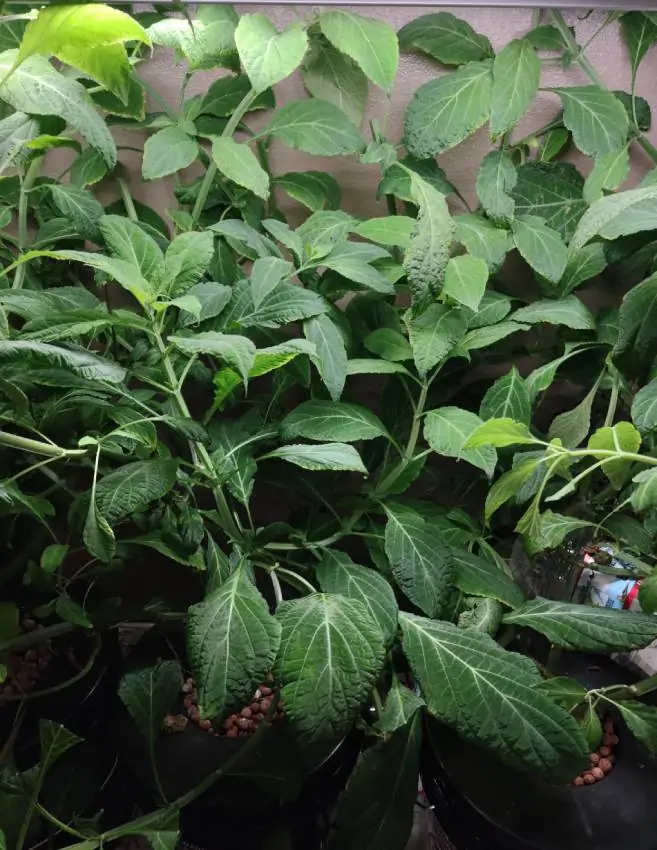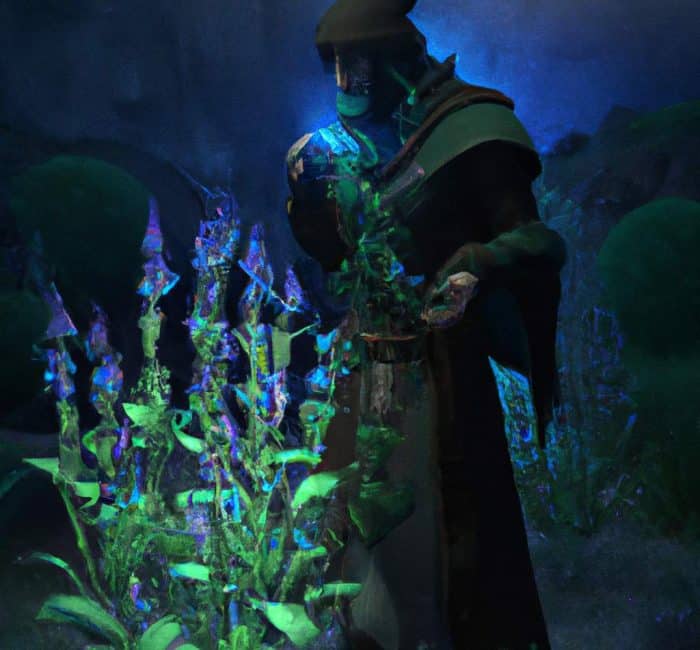Salvia Divinorum, also known as Diviner’s Sage, is a unique plant with powerful psychoactive properties. In this article, we will explore where Salvia Divinorum is found, its traditional, recreational, and spiritual uses, as well as its effects on the mind and body.
We will also discuss how to identify this plant through its physical characteristics, smell, and packaging. We will delve into the potential dangers of Salvia Divinorum and provide tips on how to consume it safely.
Key Takeaways:
- Salvia Divinorum is a psychoactive plant known for its traditional medicinal, recreational, and spiritual uses.
- To identify Salvia Divinorum, look for its unique physical characteristics, smell and taste, and check the packaging and labeling.
- When consuming Salvia Divinorum, it is important to follow dosage guidelines, take precautions, and be aware of its legal status to avoid potential dangers.
What is Salvia Divinorum?
Salvia Divinorum is a plant species belonging to the Lamiaceae family, native to Oaxaca state in Mexico. It is known for its psychoactive properties and has been used traditionally by the Mazatec Indians for spiritual and medicinal purposes.

The Mazatec Indians, indigenous to the Oaxaca region, have a rich history of utilizing Salvia Divinorum in ceremonial rituals and healing practices. The plant itself is characterized by its unique green leaves with a distinctive heart-shaped appearance and hollow square stems. Within the Lamiaceae family, which includes many well-known aromatic plants such as mint and basil, Salvia Divinorum stands out for its potent effects when consumed.
Dating back centuries, the Mazatec people have revered this plant as a sacred tool for connecting with the spiritual realm and achieving altered states of consciousness.
Where is Salvia Divinorum Found?
Salvia Divinorum is primarily found in Oaxaca state, Mexico, where it grows in mountainous regions and can also be cultivated in other parts of the world for research and recreational purposes.
Its natural habitat includes damp, shaded areas with rich soil, making the mountainous terrain of Oaxaca state an ideal location for its growth. While traditionally native to this region, enthusiasts have successfully grown Salvia Divinorum in controlled environments worldwide, expanding its availability for various uses. Its psychoactive properties have sparked interest among researchers and individuals seeking alternative experiences.
What Are the Uses of Salvia Divinorum?
Salvia Divinorum is utilized for traditional medicinal, recreational, and spiritual purposes, showcasing its diverse range of applications and effects on individuals.
Traditional Medicinal Use
Salvia Divinorum has a long-standing history of being used by indigenous tribes like the Mazatec Indians for treating various ailments and facilitating spiritual healing.
In traditional medicine, Salvia Divinorum is known for its ability to induce intense visions and alter states of consciousness during spiritual ceremonies. The Mazatec Indians, skilled in the art of spiritual healing, have been using this sacred plant for generations to connect with the divine realm and gain insights into the mysteries of life.
Salvia Divinorum is believed to possess healing properties that can aid in physical ailments such as headaches, rheumatism, and stomach issues. It is often brewed into a tea or chewed to release its powerful effects, allowing individuals to enter a trance-like state for introspection and healing.
Recreational Use
Salvia Divinorum is commonly consumed recreationally for its hallucinogenic effects and altered states of consciousness, attracting individuals seeking unique sensory experiences.
Users of this plant often report vivid visual and auditory hallucinations, time distortion, and a sense of detachment from reality. The psychoactive compound responsible for these effects is known as salvinorin A, which interacts with the brain’s kappa opioid receptors.

Salvia is typically smoked, chewed, or brewed into a tea for ingestion, with effects onset quickly and lasting for a short duration. Its legal status varies worldwide, with some countries regulating or banning its use due to concerns over safety and potential for abuse. Despite this, Salvia Divinorum continues to be a popular choice among those intrigued by its mind-altering properties.
Spiritual Use
Salvia Divinorum holds spiritual significance for some individuals, who use it in ceremonies and rituals to achieve enhanced awareness, inner exploration, and connection to the divine.
In these spiritual practices, Salvia Divinorum is typically consumed in a controlled setting, often with a shaman or guide to facilitate the experience. Participants may engage in meditation, chanting, or other rituals to prepare themselves for the journey ahead. The ceremonial context helps create a sacred space where individuals can delve deep into their subconscious mind, seeking profound spiritual insights and revelations.
What Are the Effects of Salvia Divinorum?
The effects of Salvia Divinorum can range from short-term hallucinations, altered perceptions, and dissociation to long-term psychological impacts and potential risks on mental health.
Short-term effects of consuming Salvia Divinorum can vary from intense visual and auditory hallucinations to feelings of detachment from reality, causing users to experience altered states of consciousness. These hallucinatory experiences can lead individuals to perceive time differently and feel disconnected from their surroundings, often resulting in a sense of distortion and unreality.
In the long term, frequent use of Salvia Divinorum may have lasting impacts on mental health, potentially leading to increased anxiety, depression, or even triggering underlying psychological disorders. It is important to recognize the potential risks associated with the use of this potent hallucinogen and approach its consumption with caution.
Short-term Effects
The short-term effects of Salvia Divinorum may include intense hallucinations, altered sense of time and reality, and profound spiritual experiences, leading to temporary dissociation from the surroundings.
Consumers of Salvia Divinorum often report vivid visual and auditory distortions, where colors may appear more vibrant and sounds more pronounced. This altered perception of reality can result in a distorted sense of time,
with minutes feeling like hours or even seconds. Temporal distortion is a common phenomenon experienced by users, making them feel disconnected from the normal flow of time. This temporal alteration contributes to the intense hallucinatory experiences that users often describe.
Long-term Effects
Long-term use of Salvia Divinorum has been associated with certain psychological risks such as depersonalization, psychosis, and potential alterations in DNA expression, highlighting the importance of responsible consumption.
Depersonalization, a condition where individuals feel detached from themselves or reality, has been reported among chronic users of Salvia Divinorum.
This altered state of perception can have profound implications on one’s mental well-being and overall quality of life. Studies suggest that prolonged exposure to the active compounds in Salvia Divinorum may lead to subtle changes in genetic expression, potentially impacting how certain genes are activated or suppressed.
How to Identify Salvia Divinorum?
Identifying Salvia Divinorum involves recognizing its distinct physical characteristics, distinct smell and taste, and analyzing packaging and labeling information to ensure authenticity and quality. “
When observing Salvia Divinorum, one should pay attention to its unique minty aroma and the slight bitterness in taste that sets it apart from other plants. In terms of packaging, authentic Salvia Divinorum is typically sold in:
- reliable, airtight containers that preserve its potency and freshness.
- Look for labeling that includes the plant’s scientific name, growing conditions, and dosage recommendations.
Taking these factors into account can help in identifying genuine Salvia Divinorum from other similar products on the market.”
Physical Characteristics
Salvia Divinorum can be identified by its unique physical traits such as large green leaves, square stems, and characteristic white flowers, aiding in its botanical distinction.

One of the most striking features of Salvia Divinorum is its large, heart-shaped green leaves that grow in pairs along the square stems, giving the plant a dense and lush appearance. The stems of this plant are distinctively square in shape, setting it apart from many other species. When in bloom, Salvia Divinorum produces delicate white flowers that contrast beautifully against the deep green foliage, adding to its overall appeal. These white flowers are often clustered in small groups at the tips of the plant’s stems, creating a visually stunning display.
Smell and Taste
Salvia Divinorum emits a distinctive fragrance often described as minty or earthy, with a slightly bitter taste that sets it apart from other botanical specimens, aiding in its identification.
These olfactory and gustatory properties of Salvia Divinorum play a crucial role in its recognition by experienced botanists and enthusiasts. The unique scent of Salvia Divinorum, akin to a blend of mint and earthiness, is easily distinguishable once you encounter it. Its bitter taste, though not particularly pleasant, serves as another distinctive feature that separates this plant from others in its genus. This combination of a distinct fragrance and bitter taste creates a sensory experience that is instantly recognizable to those familiar with Salvia Divinorum.
Packaging and Labeling
Authentic Salvia Divinorum products are typically labeled with relevant information about the plant’s origin, potency, and proper usage instructions, ensuring transparency and consumer safety.
These details play a crucial role in differentiating genuine Salvia Divinorum products from counterfeit or low-quality alternatives. The packaging not only provides essential information to the consumer but also acts as a safeguard against misuse. For instance, clear labels specifying the potency of the product help individuals understand the appropriate dosages and potential effects, promoting responsible usage.
What Are the Dangers of Salvia Divinorum?
The dangers associated with Salvia Divinorum use include potential psychological risks like psychosis, altered perception, and the risk of physical harm due to impaired judgment and coordination.
When an individual consumes Salvia Divinorum, they may experience a distorted sense of reality, often leading to confusion and disorientation. This altered perception can be dangerous, as it may cause individuals to act recklessly or put themselves in harm’s way without realizing the consequences. Impaired cognitive function and judgment can result in accidents, injuries, or even fatalities. Users may find it challenging to distinguish between what is real and what is a hallucination, making it difficult to navigate everyday tasks safely.
Psychological Risks
Salvia Divinorum consumption poses psychological risks such as acute psychosis, depersonalization, and altered states of consciousness, emphasizing the importance of informed and cautious use.
It is essential to understand the potential mental health implications that can arise from the use of Salvia Divinorum. Acute psychosis, characterized by a loss of contact with reality, can be triggered by the powerful effects of this plant. This altered state of consciousness can lead to disturbing and uncontrollable experiences that may linger even after the immediate effects wear off.
Depersonalization, where individuals feel detached from their thoughts, feelings, and sense of identity, is another concerning effect that users may encounter, highlighting the need for responsible consumption and awareness of the psychological dangers.
Physical Risks
Physical risks of Salvia Divinorum use may include impaired coordination, potential accidents, and adverse reactions in sensitive individuals, underscoring the need for responsible consumption.
One of the significant hazards of consuming Salvia Divinorum is the impaired coordination that users may experience, leading to difficulties in walking, driving, or performing tasks that require precise movements. This poses a heightened risk for accidents such as falls or collisions, especially when operating heavy machinery or driving vehicles. It is crucial to note that individuals react differently to Salvia Divinorum, and some may be more susceptible to adverse reactions such as hallucinations, paranoia, or increased heart rate, which can escalate the dangers associated with its consumption.
How to Consume Salvia Divinorum Safely?
Ensuring the safe consumption of Salvia Divinorum involves following dosage guidelines, taking necessary precautions, and being aware of the legal status of the substance in different regions.
Regarding dosage recommendations, it is crucial to start with a low dose and gradually increase to assess the effects. Proper dosage management can help prevent any adverse reactions. It’s important to consume Salvia Divinorum in a controlled environment with a sober individual present for supervision.
It’s vital to research the legal status of Salvia Divinorum in your location, as regulations vary widely. Stay informed about any restrictions or prohibitions to avoid legal repercussions. Remember, responsible consumption is key to a safe and enjoyable experience.

Dosage Guidelines
Adhering to recommended dosage guidelines while consuming Salvia Divinorum is crucial to avoid adverse effects, overdose, and ensure a controlled and manageable experience.
Salvia Divinorum, a potent plant with psychoactive properties, requires careful administration to maximize its benefits while safeguarding the user’s well-being. Stay within the recommended dosage range to enjoy the desired effects without venturing into potentially dangerous territory.
Overdosing on Salvia Divinorum can lead to intense and unpredictable experiences that may be overwhelming or even harmful. Keeping your consumption within the prescribed limits helps prevent these undesirable outcomes, allowing for a smoother and more enjoyable journey.
Remember, moderation is key when exploring the realms of Salvia Divinorum. By practicing controlled experiences through proper dosage regulation, users can engage with this mystical plant in a safe and positive manner.”
Precautions and Warnings
Taking necessary precautions such as having a sober sitter, avoiding mixing with other substances, and being in a safe environment can minimize the risks associated with Salvia Divinorum consumption.
When consuming Salvia Divinorum, individuals should also pay attention to their physical surroundings. Ensuring that the environment is calm, quiet, and free of any potential hazards can contribute to a positive experience. Harm reduction strategies are essential, so it’s crucial for users to be aware of the potential effects of the substance. Having a designated area for consumption, away from busy or crowded places, can enhance safety. Having access to water and comfortable seating can help individuals stay hydrated and at ease during their experience.
Legal Status
The legal status of Salvia Divinorum varies across different countries, with some nations like Belgium, Denmark, and Italy banning its use, while others such as Australia and Japan have imposed restrictions on its sale and distribution.
In the context of international regulation, the United Nations has classified Salvia Divinorum as a controlled substance, urging member countries to monitor and restrict its availability. Countries like Belgium have explicitly prohibited both the cultivation and possession of the plant, emphasizing its psychoactive properties. On the other hand, in Australia, it is classified as a Schedule 9 substance, leading to stringent regulations on its import, export, and sale. Japan has also placed restrictions on Salvia Divinorum, categorizing it as a controlled substance under their laws.
Frequently Asked Questions
What is Salvia Divinorum?
Salvia Divinorum is a psychoactive plant that is native to Mexico. It is known for its hallucinogenic properties and has been used for centuries by indigenous cultures for spiritual and medicinal purposes.
How can I identify Salvia Divinorum?
There are a few key characteristics to look for when identifying Salvia Divinorum. It typically has large, green leaves with a distinct scent and square-shaped stems. It also produces small, purple flowers when in bloom.
Where can I find Salvia Divinorum?
Salvia Divinorum is primarily found in the mountainous regions of Oaxaca, Mexico. It can also be found in some parts of Central and South America. In some areas, it may be grown as an ornamental plant.
Are there different varieties of Salvia Divinorum?
Yes, there are several different varieties of Salvia Divinorum, each with their own unique characteristics. Some varieties may have larger or smaller leaves, different colors, or varying levels of potency.
What are the potential risks of consuming Salvia Divinorum?
Salvia Divinorum can have powerful hallucinogenic effects and should be approached with caution. It is not recommended for recreational use and can cause intense and sometimes frightening experiences. It may also have interactions with certain medications and pre-existing health conditions.
How can I use Salvia Divinorum safely?
If you choose to consume Salvia Divinorum, it is important to do so in a safe and responsible manner. This includes having a trusted guide or sitter present, starting with a small dose, and being in a comfortable and familiar environment. It is also important to research and understand the potential risks and effects before consuming.



